Unruly passenger incidents are again making headlines globally, with their impact felt in the sometimes passenger-turbulent skies over Hawaii. These disruptions, from diversions to safety concerns, highlight the growing need for solutions.
One of Europe’s largest and most influential airlines, Ryanair, has proposed a bold strategy: limiting airport alcohol sales to two drinks per passenger. Could similar measures be heading our way to help improve the travel experience for Hawaii-bound flights?
Why Ryanair’s Proposal Matters.
Ryanair isn’t just another airline; it is Europe’s largest, carrying over 160 million passengers annually across more than 40 countries. Its scale alone has made it a key player in global air travel trends, and some have analogized it with Southwest Airlines here in the U.S. However, Ryanair’s operation of flights across Europe, where the combination of frequent delays and a robust airport drinking culture has led to a spike in unruly passenger incidents the airline finds unacceptable and plans to change.
Ryanair’s proposed plan to limit alcohol sales involves using boarding passes to track and restrict airport bar and restaurant purchases. The system would function similarly to duty-free alcohol regulations, where passengers can only buy a set amount tied to their flight details.
By capping alcohol sales at two drinks per passenger, Ryanair aims to prevent excessive consumption before boarding, a common factor in many unruly passenger incidents. This approach also seeks to make enforcement straightforward and standardized, reducing the likelihood of intoxicated individuals causing disruptions onboard. If successful, this method could serve as a model for airlines worldwide, including those serving Hawaii.
With incidents of passenger misconduct said to occur at a rate of one in about 500 flights globally, according to the International Air Transport Association (IATA), Ryanair’s initiative could become a model to be adopted in the U.S., including for Hawaii-bound airlines grappling with similar challenges.
Hawaii’s unique flight dynamics.
Flights to Hawaii often present their own set of challenges. With durations of 5 to 10 hours, these long-haul journeys are not just a means of transportation but a prelude to a long-awaited vacation for many travelers. The “vacation mindset” often begins before boarding, with passengers indulging in tropical cocktails at airport bars. While this can set the tone for relaxation, excessive alcohol consumption can quickly lead to issues.
Hawaii flights have seen more than their share of disruptions in recent years. For instance, a Southwest flight was diverted back to Kona after four hours due to an unruly passenger, causing delays and confusion for everyone onboard.
Similarly, another incident involved a Hawaiian Airlines widebody flight that returned to the mainland following severe mid-flight disruptions.
These situations illustrate the growing frequency of diversions on Hawaii routes, with far-reaching consequences for travelers and airlines alike.
The costs of Hawaii flight disruptions.
The economic and operational consequences of unruly passenger incidents are staggering. A single diversion over the Pacific can cost airlines tens of thousands of dollars, factoring in fuel, crew overtime, and passenger accommodations. Beyond the financial impact, these incidents erode trust in the travel experience, particularly for Hawaii visitors who may already feel stretched by high airfare and long travel times.
Hawaii’s tourism-driven economy relies almost exclusively on air travel. Ensuring smooth and enjoyable flights is crucial for airlines, the state, and its reputation as a premier destination.
Would a two-drink limit work here?
Ryanair’s proposal to limit airport alcohol sales through boarding passes raises interesting questions. While it could reduce the risk of passengers boarding already intoxicated—unless they arrive at the airport that way—implementing such measures might face significant logistical hurdles. For Hawaii-bound flights, where passengers often arrive at airports hours in advance, enforcing limits could also conflict with a leisure-oriented atmosphere.
Airlines are already restricting alcohol consumption onboard more than in the past, but gaps in airport enforcement and regulation remain challenging. A more holistic approach might involve collaboration between airlines, airports, and government regulators to address the issue without penalizing responsible travelers.
Reader perspectives on solutions.
Past Beat of Hawaii articles have sparked extensive spirited discussions on passenger misconduct, with readers offering a mix of frustration, constructive suggestions, and creative ideas. Many point to the role of alcohol in these incidents, such as Donna, who urged airlines to “stop serving alcohol to visibly drunk passengers,” noting that this has ruined too many flights. Claudia K. highlighted another contributing factor, emphasizing that “the seating on planes is so tight that it’s no wonder people lose their tempers,” suggesting that more space could lead to fewer conflicts.
Some readers propose stricter measures, like Klsd, who advocated for breathalyzers before boarding to prevent intoxicated individuals from ruining flights for others. Meanwhile, others emphasize the importance of penalties, with Valerie N. suggesting that disruptive passengers face bans from flying and steep fines to deter future incidents. These diverse perspectives illustrate the complexity of addressing passenger misconduct while maintaining fairness and passenger comfort.
Could Hawaii’s airlines lead the way?
Hawaiian Airlines, Alaska Airlines, Southwest Airlines, and others serving the islands can set a precedent within the boundaries of federal regulations. While the FAA governs most air travel-related policies, airlines can implement measures that align with their operations and passenger demographics.
Proactive steps could include expanding non-alcoholic drink options and promotions, tightening pre-boarding assessments for visibly intoxicated passengers, and closer control of in-flight service. These measures, tailored to the unique dynamics of Hawaii travel, could help reduce disruptions and ensure a safer, more enjoyable experience for all passengers across the Pacific.
A call to action for travelers.
Ultimately, ensuring safe and pleasant skies is an entirely shared responsibility. Travelers can play their part by moderating alcohol consumption, respecting crew instructions, and advocating for safety and comfort policies.
Finding solutions to in-flight disruptions has become more important than ever. Whether inspired by Ryanair’s bold proposals or other innovative ideas likely to be seen soon, the goal remains to ensure that Hawaii-bound flights are as peaceful as the paradise that awaits.
Please chime in about adult beverages on Hawaii flights and in relation to in-flight disturbances.
Get Breaking Hawaii Travel News
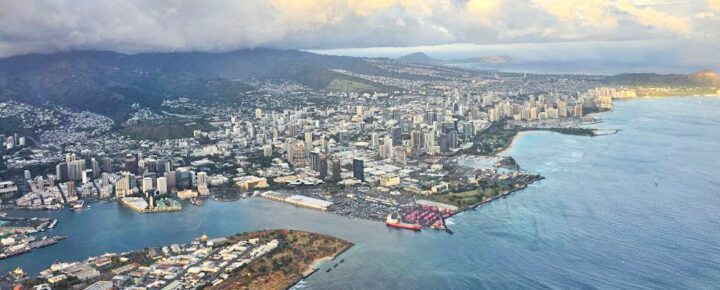
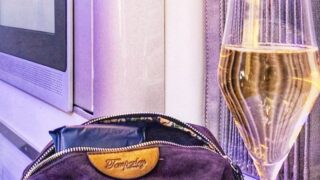
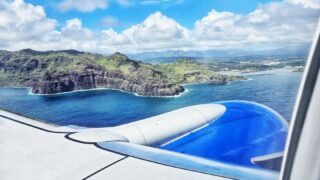
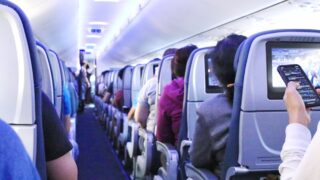
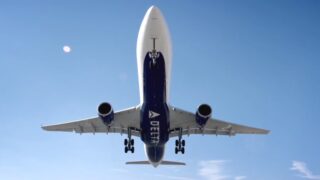
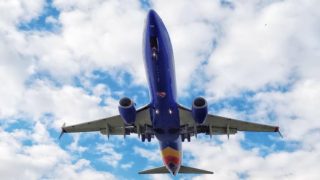
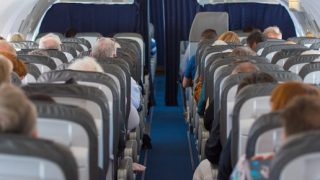
Aloha, I don’t see a 2 drink limit at an airport bar would work because the bars are there to make money. On a flight in Europe a fa confiscated a young man’s passport and told him he better behave. He was really drunk and fell asleep during the flight. Mahalo
Does the FAA really have stats that show most “unruly passengers” on planes are drunk or are they just entitled assholes? If the seats were designed for Americans in the 2020s and not modeled after CIA advanced interrogation techniques, perhaps passengers would be in a better frame of mind and not need a half dozen drinks to survive the torture of a 6-hour flight in economy “cattle” class.
Whatever the reason for bad behavior on planes, it shouldn’t be tolerated. Fines are nice but jail time and a no-fly list (that’s enforced) would be a nice start before taking away the pleasures or preferences of those who do not behave badly.
95% of airline passengers don’t realize that flying drunk (including recreational drugs) is illegal. FAA needs to require airlines and airports make this clear to all passengers. Video displays and signage need to be mandated including fine amounts and no-fly listing.
Counting drinks at the airport doesn’t work.
The only answer is this: If you act a fool on an aircraft, drunk or otherwise, you are banned from flying- zero tolerance, permanent no fly list. Why this isn’t already a thing baffles me. Just weed the idiots who can’t handle being in public out of the skies. Problem solved.
In the not-too-distant past, all passengers had to check-in at the counter face to face with an airline employee. I was one of them. We routinely refused checkin for drunks. Another agent would dial-up the airport police who would remove the drunk.
Now, it’s typical to go directly to the gate from your car. TSA isn’t going to stop them. Gate agents are under tremendous pressure to close the door on-time.
An easy solution would be to station a uniformed officer in plain sight at the gate with a breathalyzer in hand.
On-board disruptive drunks need to be zip tied to their seats and severely fined when the A/C arrives at its destination.
Once again, we will punish the many because of a few idiots.
The easy answer is, if you disrupt a flight, you pay a fine and can’t fly for one year! If it happens again, fine goes up and you can’t fly for 5 years.
I believe this will solve the issue without punishing everyone or having the additional cost of patrolling airport drink policies.
I can’t understand why we don’t prosecute these people, and quit letting them off!
IMHO no airline should attempt to mimic anything Ryanair does. The airline is terrible and tends to attract troublemakers.
We travel to Hawaii twice each year from the middle of the mainland and have done so for over twenty years. We have never witnessed an unruly passenger on any of those flights.
Hmmm… Smoking was banned because it caused cancer. Now Alcohol has been confirmed to cause cancer, people may not want to breathe in alcohol fumes. Perhaps we will see alcohol banned in public spaces in a few years once a few class action suits have been filed against drinks companies?
If need to present boarding pass when buying a drink, it could record # of drinks and time stamp. If a group, each person should present a boarding pass. Perhaps, 2 drinks first 2 hours, and then 1 more per hour (or something like this would help – even for long layovers). However, very hard to enforce anyone who has 2-3 drinks before arriving at airport.
Breathalyzers before boarding!? Maybe the single dumbest thing that I have read in awhile. Can you imagine the extra time that it will take for every passenger to perform that test before boarding? They will have too start the boarding process at least an hour in advance and considering how many aircraft are turned around in barely 30 minutes that scenario will totally screw up airline schedules. If someone smells of alcohol as they are boarding then fine, pull them aside and have them blow just like they have done when flight crew members pass thru the checkpoints or show up at the gate. If they refuse then refuse to board them. Also, a two drink maximum should be standard regardless of how long the flight is and Any alcohol brought on board should be sold in factory sealed bags that cannot be opened inflight.